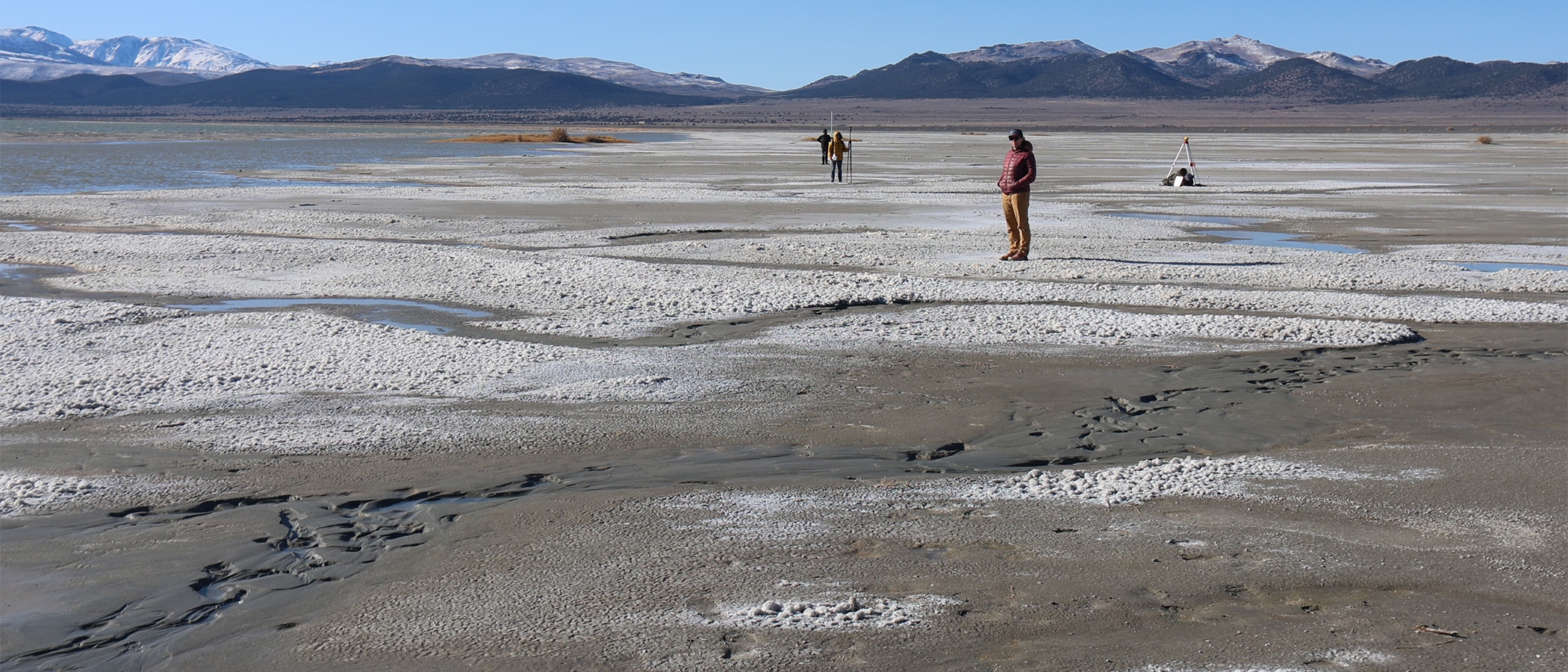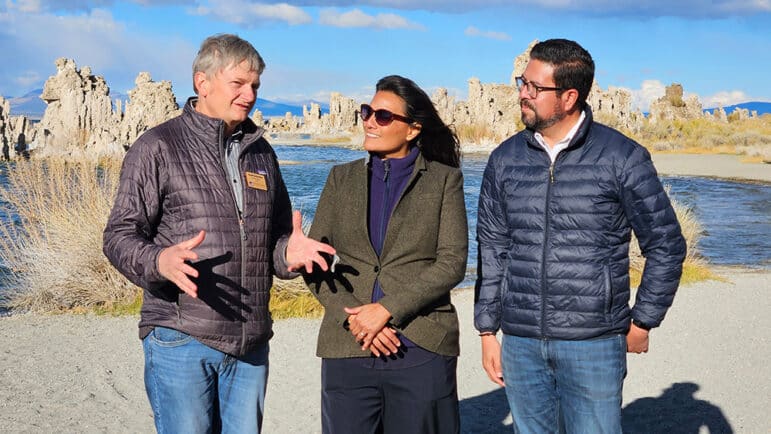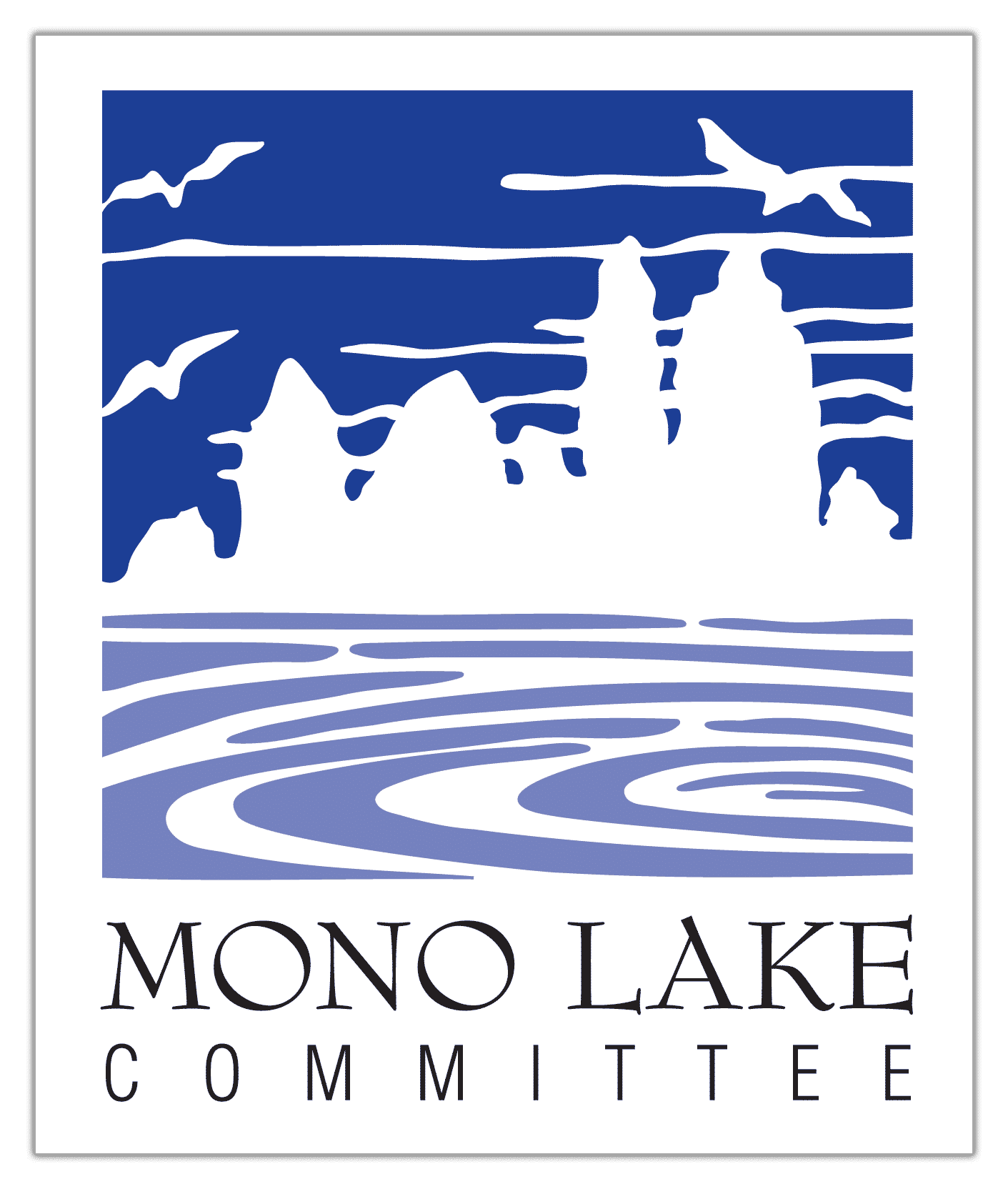
Air quality violations likely to increase
In 1994 the California State Water Resources Control Board issued Decision 1631, mandating a Mono Lake elevation of 6,392 feet above sea level that balanced protection of Public Trust resources and continued delivery of water to Los Angeles. Air quality is one of those protected resources jeopardized by a low lake. The exposed lakebed is a source of PM-10 pollution—particulate matter less than 10 microns in diameter—and for decades the Mono Basin has ranked among the worst dust emissions in the country.
Mono Lake remains well below its mandated level but the Los Angeles Department of Water & Power (DWP) insists the lake is healthy and that there is no need to adjust its water exports.
Air quality regulators disagree.
Regulating agencies visit Mono Lake
Last October Martha Guzman, Regional Administrator of the federal Environmental Protection Agency, convened a meeting here in Lee Vining to discuss the issue of air quality violations at Mono Lake. Representatives from ten regional, state, and federal agencies, along with the Mono Lake Kootzaduka’a Tribe, DWP, and the Mono Lake Committee participated in presentations about the condition of the lake, a roundtable discussion about how water exports are perpetuating air quality violations, and a field trip to the lake.

The tone of the meeting was optimistic, as participants maintained that raising the lake to the Public Trust lake level will resolve many present-day concerns. Guzman highlighted benefits to not only air quality, but also the overall health of the ecosystem, the traditions of the Kootzaduka’a Tribe, and scenic and recreational values. The meeting concluded with an agreement for further collaboration to investigate solutions to the challenge of raising the lake.
Unfortunately, in subsequent weeks DWP’s failure to uphold its plan to not increase exports this year and its lack of communication signaled an end to the collaborative spirit. The State Water Board set aside its plans to facilitate the proposed collaboration and reaffirmed the intention to schedule a hearing in 2025.
Each year of water exports affects air quality
Mono Lake Committee analysis shows that, at Mono Lake’s current elevation, 16,000 acre-feet—DWP’s maximum allowable export—exposes approximately 75 acres of emissive lakebed along the northern and eastern shorelines. While it is the combination of emissive soil and wind that causes dust events, anyone who has spent time in the Mono Basin knows that strong wind is a regular feature of our climate. Therefore, increases in emissive land are expected to lead to increased air quality violations.
Had DWP exported only 4,500 acre-feet of surface water, as originally planned, 20 acres of lakebed would be newly exposed. While still damaging to air quality, the reduced export would leave more than 50 acres—the equivalent of 40 football fields—protected under water. DWP argues that its annual export from the Mono Basin has minimal impact on the lake system but every year stream diversions expose measurable acres of dust-emitting soil that negatively affect air quality.
The nature-based solution of submerging the emissive lakebed under a higher lake level that was outlined in Decision 1631 is still the most effective plan to address the air quality issue at Mono Lake. DWP’s exports limit lake rise year-by-year; the cumulative effect of reduced water to Mono Lake has caused decades of Clean Air Act violations. DWP has shown that voluntary commitments to raise Mono Lake are not enough. This year’s State Water Board hearing must constrain DWP’s water exports to protect the Public Trust resources in the Mono Basin.
This post was also published as an article in the Winter & Spring 2025 Mono Lake Newsletter. Top photo by Geoff McQuilkin: In order to help visualize the effects of this year’s increased diversions, Mono Lake Committee staff are standing at what would have been the approximate shore, had DWP not maximized water exports this year and let that water flow to Mono Lake instead.
